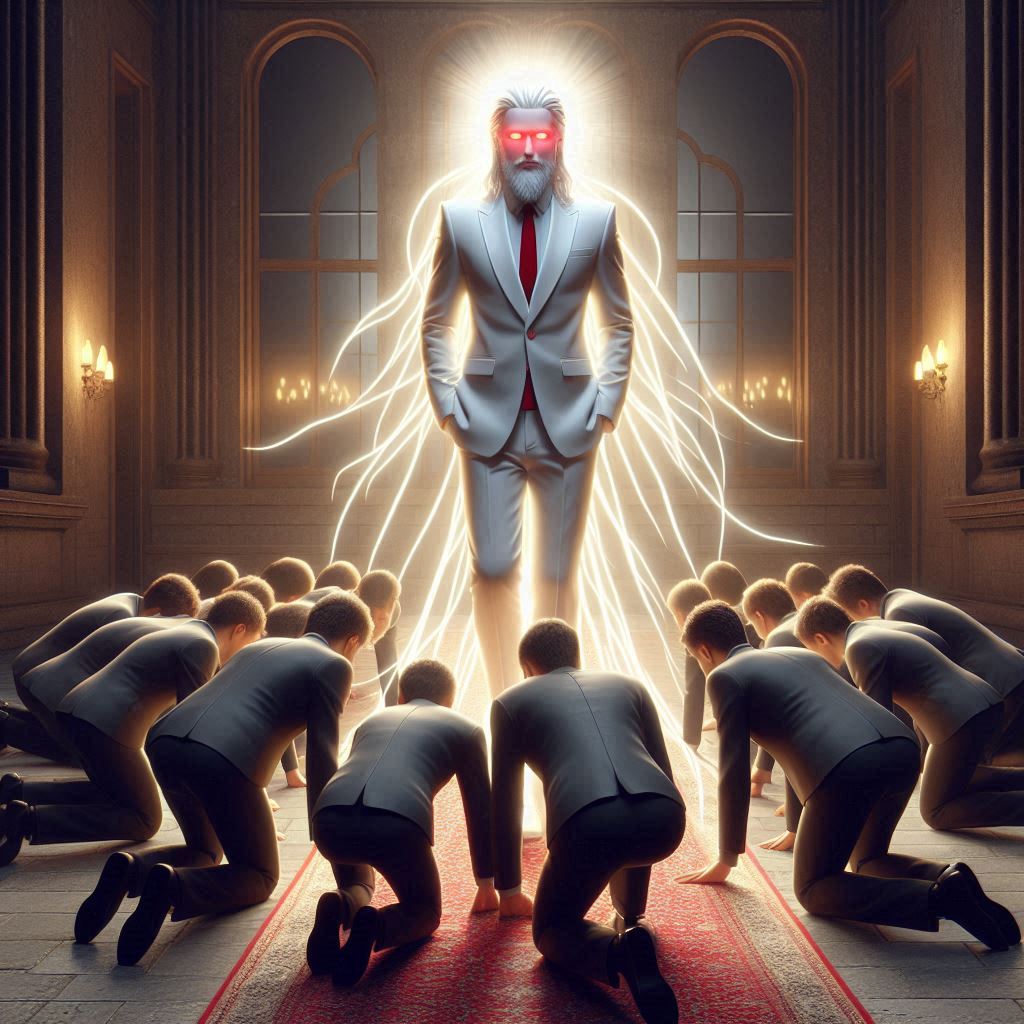The image of the beast in Revelation represents a constructed representation of the first beast (the Antichrist), brought to life by the second beast (the False Prophet) to enforce idolatrous worship and persecute those who remain faithful to God, serving as both a critical test of faith and a symbol of humanity’s ultimate rebellion against divine authority.
Biblical Description of Antichrist
Scripture portrays the Antichrist as a human figure, not a technological entity. In biblical texts, this figure is described as “the man of lawlessness” or “man of perdition” (2 Thessalonians 2:3) who will rise to power and deceive nations.1 The term “Antichrist” appears specifically in John’s epistles, while Revelation refers to this entity as “the Beast” – a powerful, deceptive figure opposing God’s authority.
From a theological perspective, most Christian scholars reject the notion that AI itself could be the Antichrist, as prophecy consistently describes a person empowered by evil rather than an impersonal technology. While some contemporary discussions speculate about AI’s role in end-times scenarios, the consensus among theologians maintains that the Antichrist will manifest as a human leader, though potentially one who leverages advanced technologies to further their agenda of deception and control.

AI as Antichrist Tool
While AI itself is not considered to be the Antichrist according to mainstream biblical interpretation, many Christian thinkers suggest it could serve as a powerful tool in the Antichrist’s arsenal. The technology could enable unprecedented surveillance, digital currency control, or even contribute to creating the “image of the beast” that speaks and enforces worship as described in Revelation 13:15.
Some religious commentators, including figures like Jimmy Evans and Alan Didio, have specifically addressed AI’s potential role in end-times prophecy, suggesting that its language abilities and rapid advancement make it an ideal mechanism for deception and control on a global scale. The concern isn’t about the technology itself having supernatural agency, but rather how it might be wielded by those with evil intent to fulfill certain aspects of prophetic scripture, particularly those involving mass deception and enforced allegiance to the Antichrist’s system.

The Image of the Beast

The image of the beast appears in Revelation 13:14-15 as a representation or idol of the first beast, distinct from the beast itself. This constructed likeness is given “breath” by the second beast (the False Prophet), enabling it to speak and condemn to death those who refuse to worship it. Unlike the first beast which symbolizes the Antichrist or an evil empire receiving power directly from Satan, the image functions primarily as an enforcement mechanism-a tool rather than an independent entity.
This symbolic idol serves multiple purposes within Revelation’s framework: it represents ultimate idolatry and rebellion against God; it creates a clear dividing line between the faithful and unfaithful; and it becomes the focal point for persecution of believers. Some modern interpretations speculate that advanced technologies could potentially fulfill this prophecy, creating a lifelike representation capable of monitoring and enforcing loyalty to the Antichrist’s system. However, regardless of its physical form, the theological significance remains focused on its role as the culmination of false worship and opposition to God.
Revelation’s Apocalyptic Narrative
The image of the beast fits into Revelation’s apocalyptic narrative as a pivotal element that appears after the emergence of the two beasts (the Antichrist and the False Prophet) and marks a dramatic escalation in the cosmic conflict. Within the narrative flow, this animated idol follows Satan being cast down (Revelation 12), the rise of the first beast who receives global worship (Revelation 13:1-8), and the emergence of the second beast who performs miracles to deceive humanity (Revelation 13:11-12).
This representation serves as both a test of faith and an instrument of persecution, creating a clear division between those who remain loyal to God and those who succumb to idolatry. The image’s reign is temporary, however, as Revelation later describes its ultimate destruction along with the beasts as part of God’s final judgment (Revelation 19:20).This narrative arc reinforces Revelation’s central themes of faithful endurance during tribulation and the eventual triumph of divine justice over evil.


